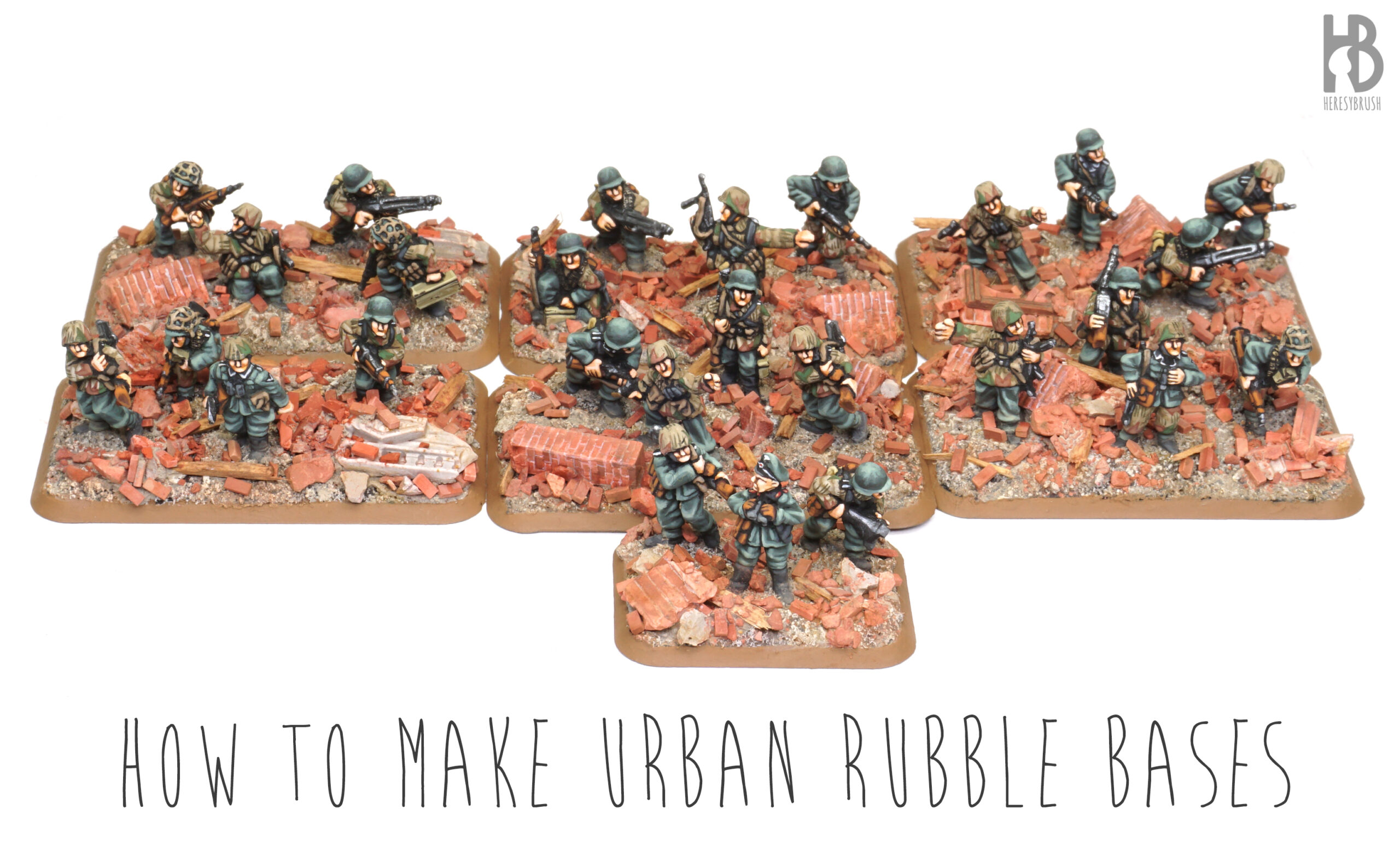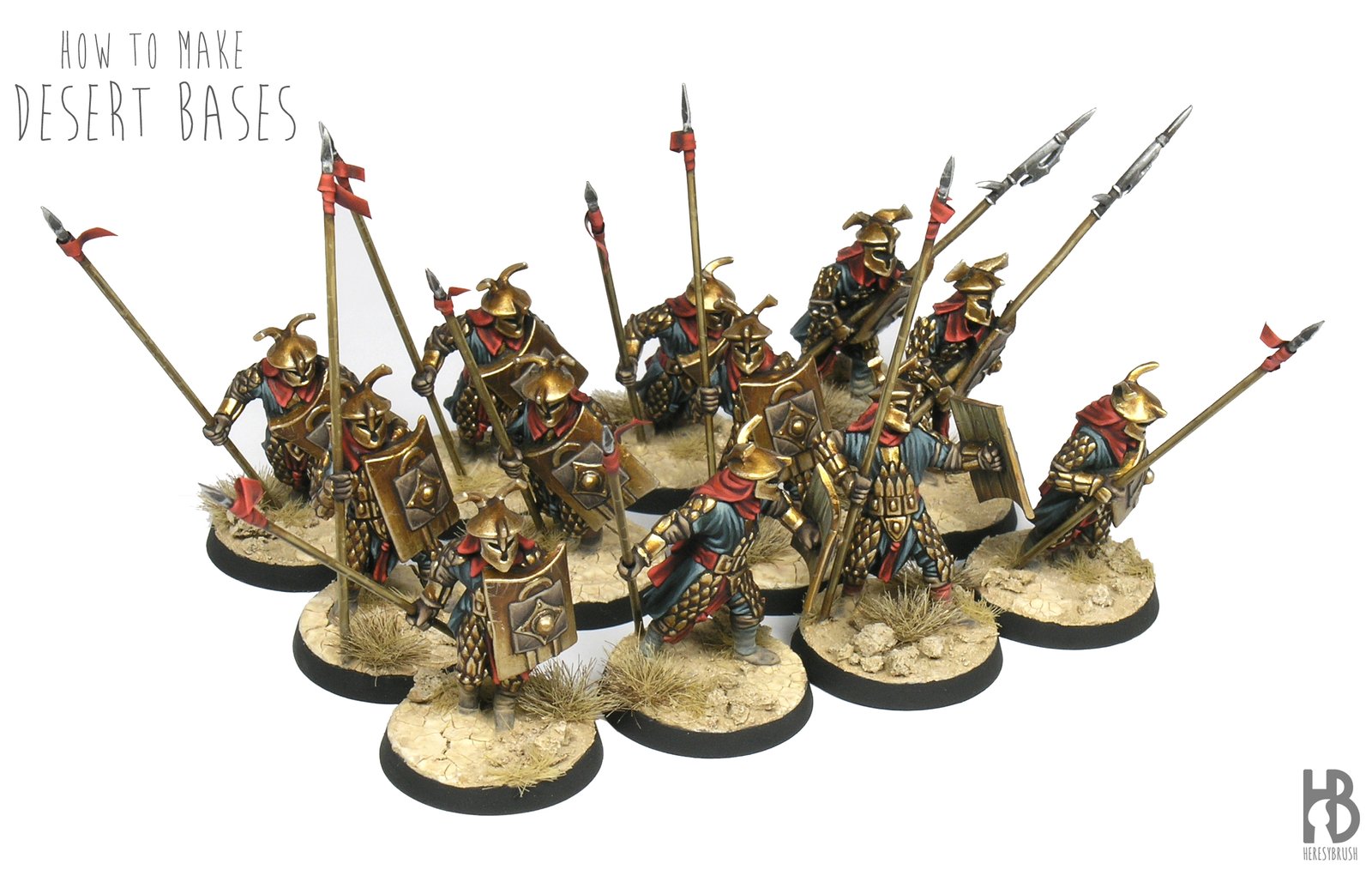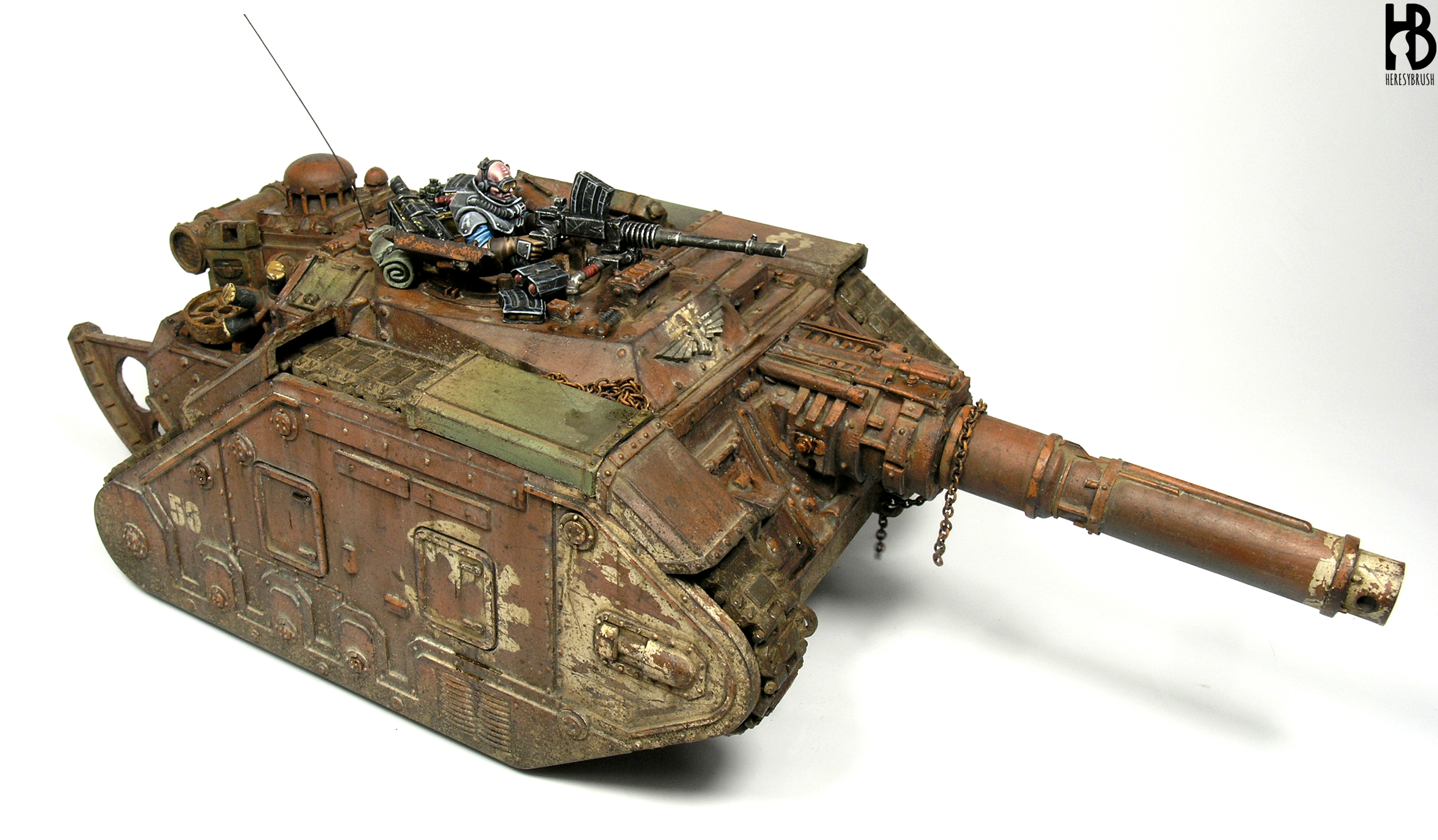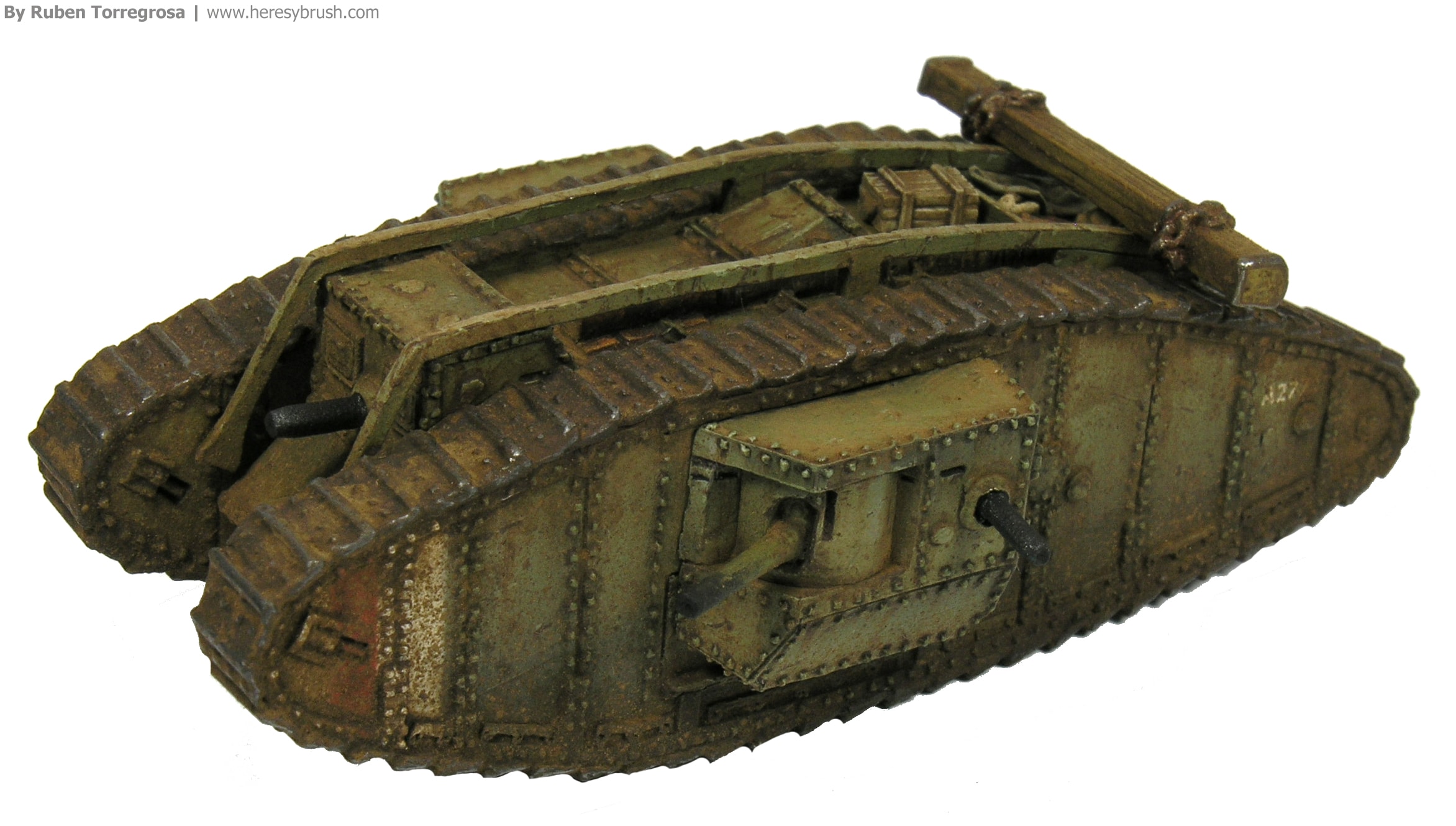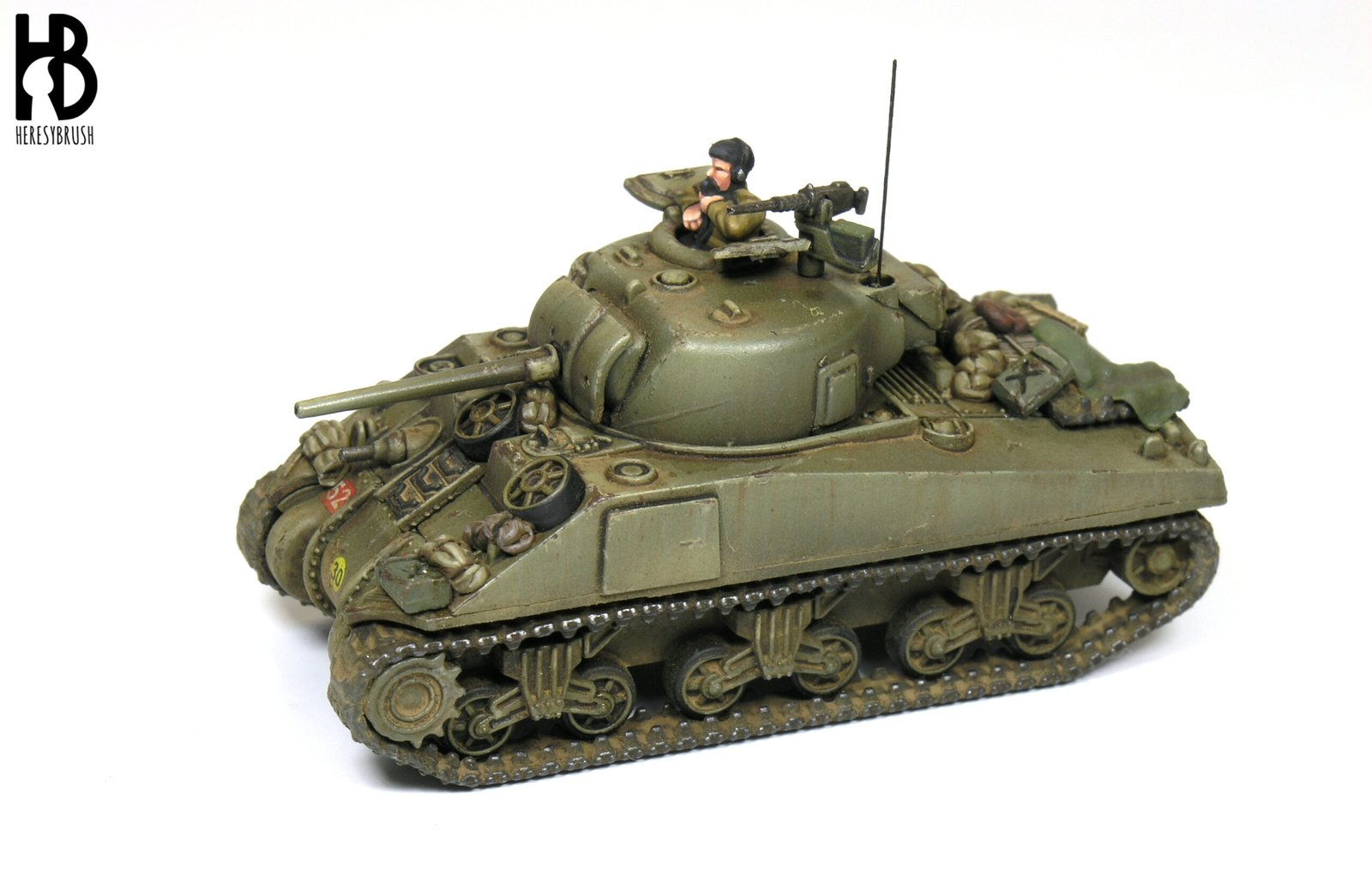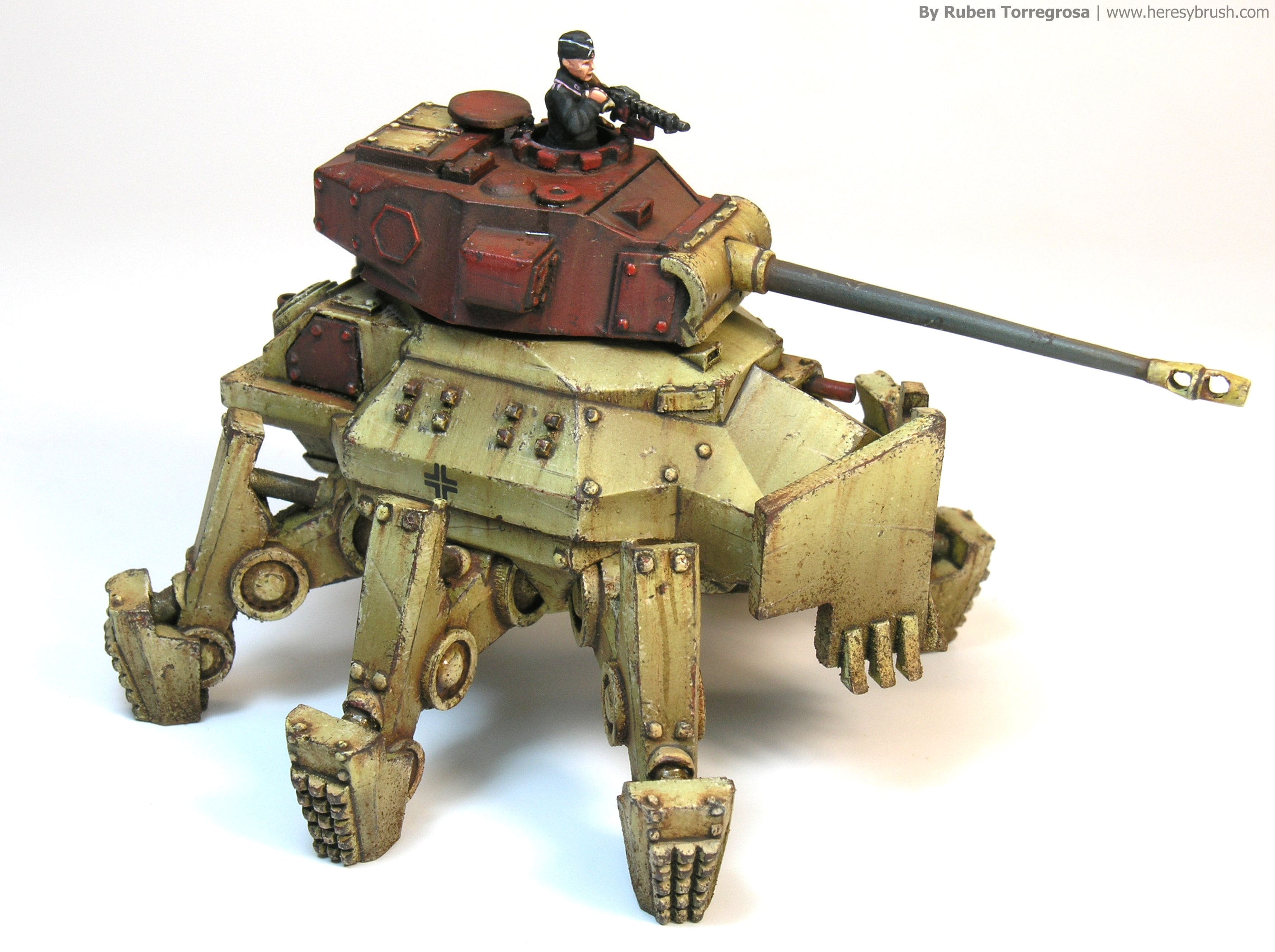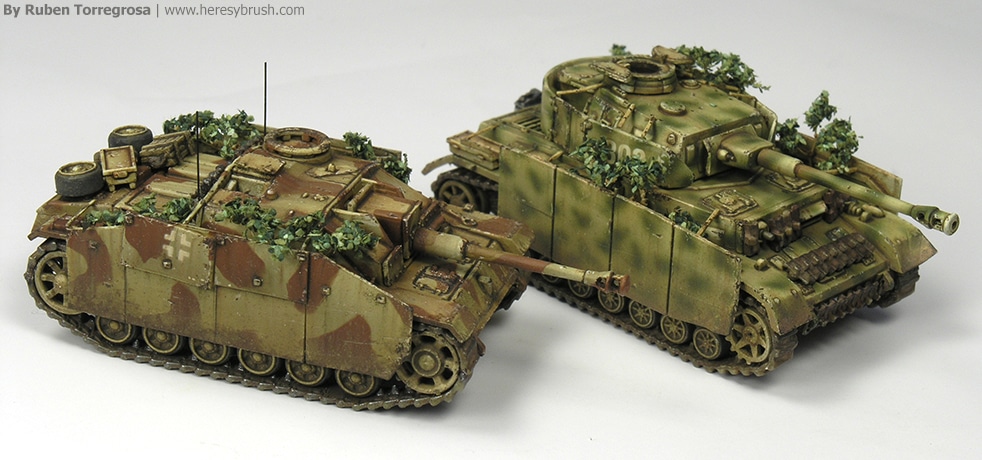In a couple of weeks, I will be attending the Flames of War National tournament in Finland (Talvisota 2024), for which I have spent the last few months assembling a new German army. Given that the theme of the army is Berlin, 1945, I wanted to craft something unique for the bases of the infantry and Flak 88 guns. In this tutorial, I will demonstrate how to create urban bases with debris in a straightforward, efficient, and effective manner. While this tutorial primarily targets 15mm miniatures (Battlefront), its principles are adaptable to other scales or projects with the simple adjustment…
How to create desert bases
In the previous post we discussed one way to paint true metallic metal gold using as an example model a unit of LOTR Easterling (28mm, Games-Workshop). Now, we will see how to finish these miniatures by making desert bases. According to my experience, one of the most difficult aspects of this hobby for newcomers (and also for veterans!) is how to make the bases. Probably one reason for this is that bases are not painted, but created. That is, we need to generate a texture and add 3D elements such as rocks, plants, debris, etc. Luckily, the market is full…
Warhammer 40.000 tanks II
After couple of years, I finally manage to finish the second Leman Russ tank for my Genestealer Cult army. This is another beautiful model from Forge World. It is a Leman Russ Destroyer, a tank hunter. To maintain certain coherence with the previous Leman Russ Mars I painted, I added air filters and the rear extension to cross trenches from another Forge World kit, as well as some track armour pieces. Choosing the painting scheme was not easy. I did not want to exactly repeat the same green color I previously used. After asking around and checking different sources for…
Extreme weathering in 15mm: Mark IV
Almost two years ago I received a number of lovely 15mm WWI tanks from Battlefront Miniatures, and I started immediately working on a video-tutorial to explain how to paint a British Mark IV tank. I completed the first part of the tutorial regarding how to paint the base color and published the video (see below). Nevertheless, the poor quality of the video discouraged me from recording a second part. Instead, I put the tank into a box with the idea of buying a new video camera in the future. Unfortunately, I haven’t had the chance (nor the money) to buy…
How to paint a British Sherman tank, and a new book: Painting Wargame Tanks
It’s a great pleasure to announce a new book published by AMMO of Mig Jimenez where I have actively been collaborating beside Mig Jimenez and Carlos Cuesta. The book contains 96 pages. After a short introduction about general materials and techniques (differences between acrylics and enamels, what is a filter or a wash, how to clean the airbrush…) you can find ten complete painting guides “step by step” of different tanks (mostly Germans, but there are also from USA and Soviet Union). The three firsts pretend to assimilate the knowledge showed in the introduction (we can say “basic level”), while…
Working with the terrain I
There are many ways to represent the sand base in our models or dioramas. We can just fix modeling sand with white glue and then paint it, we can use ready-to-use products, we can sculpt the texture, etc. In this post I want to explain another simple way using sands and clays from nature. You can find more information about how I preprared the vignete in the last issue of Wargames: Soldiers&Strategy. This way is not the best or the worst, it is just another way. I like it because I don’t have to paint the sand and therefore I…
How to paint 15mm tanks: German spider mech
While I am learning new hobbies (and sports) in this lovely Finish land, such as ice swimming, ice hockey or cross-country ski, I had enough time to paint and prepare a painting guide featuring an interesting Panzermech from ClockWork Goblin miniatures. I love this theme! In the past, I painted a couple of walkers from DreamPod9, and I currently attempt to paint as many E-series tanks as I can from Forged in Battle or Heer46. All in 1/100 scale or 15mm, of course!, my preferred scale. In this occasion, I’ve prepared a complete painting guide. However, I want to notice…
Weathering on horizontal panels in 15mm tanks
It’s very common to observe impressive streaking effects on vertical surfaces in Flames of War vehicles. However, we can’t apply the same effect on horizontal panels, because the gravity result is different, obviously. Here, I want to explain different ways or tools to work the horizontal panels. In vertical surfaces enamels and oils are usually used in this way: first we paint dots or vertical stripes with different colors. And then we blend all colors using a brush moistened in white spirit, by applying vertical strokes. The result are interesting vertical streaks. But these are illogical on a horizontal surface!.…
How to do a dusty road
Because I’m currently living in Finland, from a while I wanted to paint a Finish vehicle. First, I thought about a captured soviet T-26 tank. But the Stug III G it’s more impressive!. And I decided to display it in a dusty road. After gathering some information, thanks to some friends, I decided to paint a tritonal camouflage, very similar to the German one. And although I prepared a mud base when I started this project (because the ambient influence!), the Finish Stug tanks fought in the Continuation War, in Jun and July of 1944. Therefore, I switched the viewpoint…
Dust effects
One of the most interesting weathering effects on vehicles is the dust, above all if our model has fought in wars with few paved roads, like the Spanish Civil War o the Second War World in Russia or Africa.However, first and foremost we have to think about several points. 1) Where is placed our model. For instance, isn’t the same the dust generated in the African desert than the dust generated in an European road. 2) How many dust we want to represent, a soft effect to avoid masking other details, or a strong effect. And 3) decide the method…
